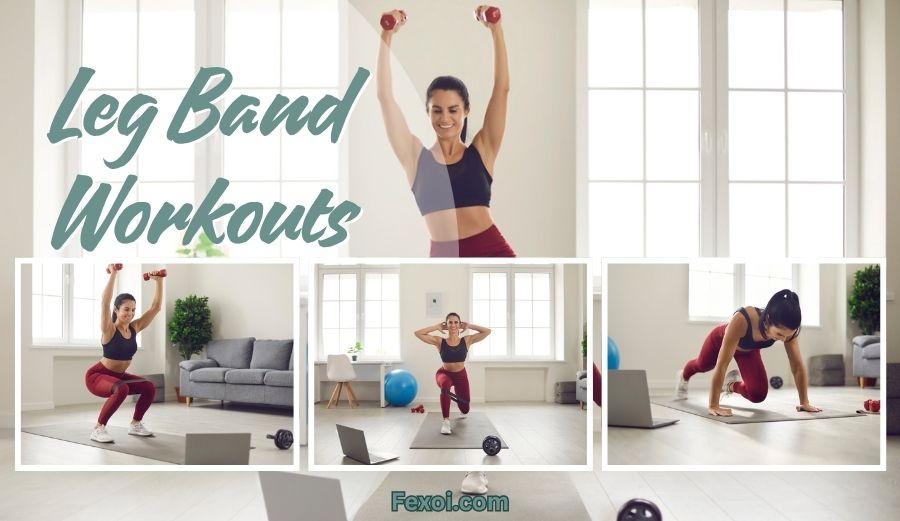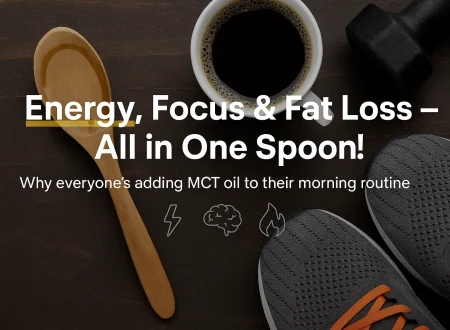Leg band workout is one of the most effective and accessible ways to build strength, stability, and muscle definition—without needing heavy equipment or a gym membership. Resistance bands offer a portable, low-impact solution that targets major lower-body muscle groups, making them ideal for all fitness levels.
Whether you’re focused on sculpting your glutes, strengthening your quads, or toning your hamstrings, this guide walks you through the best exercise band leg workouts that deliver real results.
Why Resistance Bands for Legs Are So Effective
Resistance bands for legs provide constant tension throughout your range of motion. This activates muscles more efficiently than bodyweight exercises alone. Compared to weights, bands reduce joint strain while still challenging your muscles.
According to a 2022 Harvard Health study, resistance band training can increase muscle strength, mobility, and balance—particularly in the lower body.
Key Benefits of Leg Training with Resistance Bands:
- Improves muscle endurance and stability
- Activates glutes, quads, hamstrings, and calves
- Enhances core engagement
- Ideal for injury recovery or prevention
- Convenient for travel or home use
8 Best Band Exercises for Legs
Here’s a targeted leg band workout routine to strengthen every part of your lower body. All you need is a loop resistance band or long exercise band.
Lateral Band Walks
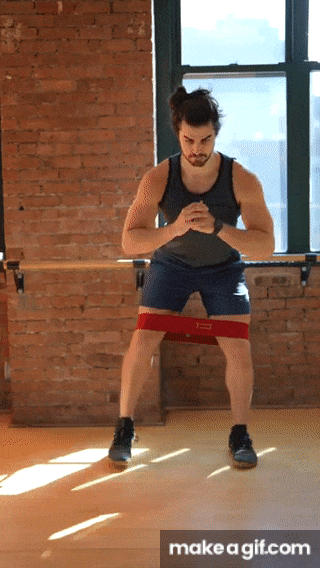
Lateral band walks are excellent for activating the glute medius—the side part of your butt that helps with hip stability and balance. This movement also strengthens your abductors and thighs, making it a great warm-up or standalone exercise. Begin by placing a resistance band around your thighs or ankles. Stand in a partial squat position, keeping your chest upright and knees slightly bent. Step sideways with your leading leg, then follow with your trailing leg, maintaining constant tension in the band. Avoid dragging your feet and resist the urge to let your knees cave inward. This movement helps correct imbalances, improves hip alignment, and prepares your body for more intense workouts.
Banded Squats
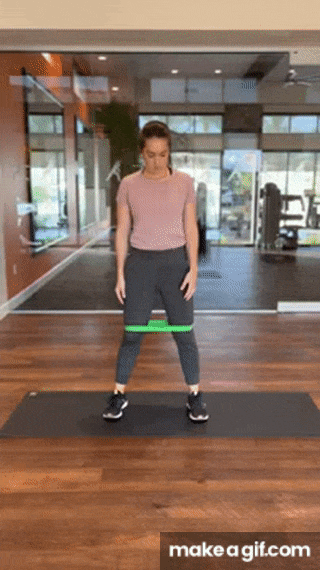
Adding a resistance band to your squat activates your glutes more deeply and trains your knees to track properly. Position the band just above your knees, stand with your feet shoulder-width apart, and turn your toes slightly outward. As you lower into the squat, push your knees outward to maintain tension in the band. This forces your glutes and hip abductors to engage, improving squat form and preventing knee valgus (inward collapse). Drive through your heels to stand back up, maintaining control and keeping your chest tall. Banded squats are perfect for building both strength and stability in the lower body while reinforcing good form habits.
Glute Kickbacks
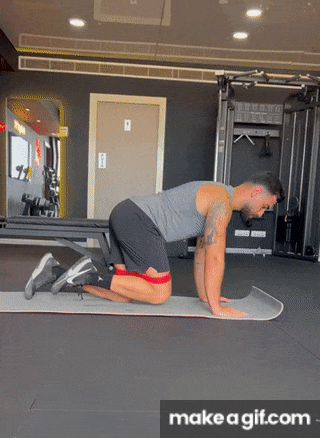
Glute kickbacks are one of the most targeted exercises for isolating the glute maximus. Using a leg band workout enhances the tension on the muscle, making every repetition more effective. Begin on all fours, with the band looped around your thighs or anchored at your feet. Keeping your back flat and core engaged, extend one leg backward and upward, squeezing your glute at the top of the movement. Avoid arching your lower back or rotating your hips. Slowly return to the starting position and repeat. This movement helps lift and firm your backside while also strengthening the hamstrings and improving lower back stability.
Standing Leg Abductions
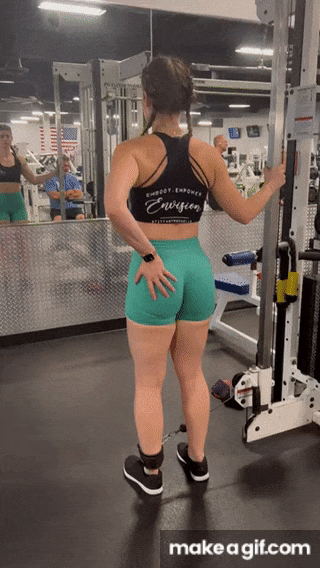
Standing leg abductions strengthen the outer glutes and hip abductors key muscles for balance, joint stability, and injury prevention. Wrap the leg band workout around your ankles and stand upright. Use a wall or chair for support if needed. Raise one leg out to the side while keeping your torso steady and your weight centered. Focus on moving slowly and keeping tension in the band. Control the motion back to the starting position. This exercise is particularly useful for athletes, runners, or anyone recovering from knee injuries, as it strengthens the muscles that stabilize the pelvis during movement.
Hamstring Curls
Many home workouts overlook hamstring curls, but using a Leg band Workout allows you to target this crucial muscle group effectively. Anchor the band to a sturdy object and loop it around your ankle. Lie face down with your legs extended. Bend your knee to pull your heel toward your glutes, working against the band’s resistance. Pause briefly at the top, then lower your leg in a controlled motion. This isolates the hamstrings while also engaging your glutes and calves. Strong hamstrings are crucial for posture, athletic performance, and injury prevention, especially for people who spend long hours sitting.
Banded Step-Ups
Step-ups are an incredible compound exercise that works your glutes, quads, and hamstrings. When you add a band above your knees, you force the glutes to stay active through every phase of the movement. Stand in front of a sturdy bench or step, with the band looped above your knees. Step up with one leg while keeping your knee pushed outward against the band. Bring the trailing leg up and stand fully before stepping back down. Alternate legs or complete one side at a time. This movement builds explosive strength, improves coordination, and adds a cardiovascular challenge when done at higher reps.
Glute Bridges with Band
Glute bridges are a fundamental movement for activating the posterior chain. Lying on your back, place a resistance band just above your knees, bend your legs, and keep your feet flat on the floor. Push through your heels to lift your hips off the ground, driving your knees outward to keep constant tension on the band. At the top, squeeze your glutes hard and hold for a second before slowly lowering down. This move is ideal for waking up lazy glutes, improving hip mobility, and supporting lower back health. Adding a band intensifies the activation, especially in the outer glutes and thighs.
Bulgarian Split Squats
This challenging single-leg movement not only targets the glutes but also improves balance, coordination, and core stability. Begin by placing one foot behind you on a bench or step and the other foot forward, with the resistance band looped above your knees. Lower your back knee toward the ground into a lunge while keeping your front knee aligned over your ankle. Push up through your front heel to return to standing. The resistance band helps keep your hips square and encourages outward knee drive, which increases glute engagement. This is a perfect finisher to really burn out your lower body.
Stretch Bands for Legs: How to Use Them Safely
Stretch bands for legs come in varying resistance levels—light, medium, and heavy. Select a resistance band that matches your current fitness level. Focus on slow, controlled movements to avoid momentum and prevent injury.
Pro Tip: Warm up your legs with dynamic stretches before your workout to improve flexibility and prevent strains.
Quick Leg Band Workout Plan (Beginner to Intermediate)
Try this sample 15-minute circuit using exercise bands:
- Banded Squats – 3 sets x 12 reps
- Lateral Walks – 3 sets x 10 steps per side
- Glute Kickbacks – 3 sets of 12 repetitions for each leg
- Glute Bridge Hold – 3 sets x 30 seconds
- Rest 30–60 seconds between sets. Perform 3x per week for best results.
Expert Insight: Why Bands Work
According to certified strength coach and author Bret Contreras, “Resistance bands can be as effective as free weights for lower body training—if you use them with proper form and intensity.” (Source)
This makes resistance leg band workout ideal for building foundational strength at home, especially for beginners or those recovering from injury.
FAQ
Are resistance bands enough for leg workouts?
Yes. When used correctly, resistance bands provide enough tension to strengthen and tone your legs effectively without the need for heavy weights.
How often should I do a leg band workout?
For balanced progress, aim for 2 to 3 sessions per week, with rest days in between for recovery.
Can I build muscle with exercise band leg exercises?
Absolutely. Progressive overload and consistent effort using exercise band leg workouts can build muscle over time, especially for beginners and intermediate users.
Which band is best for leg training?
Loop bands are ideal for most leg band workout, while long stretch bands offer versatility for hamstring curls and assisted movements.
Take the Band, Build the Legs
A well-rounded leg band workout offers strength, tone, flexibility, and convenience. Whether you’re starting your fitness journey or just want an effective, joint-friendly alternative to weights, Leg Band Workout deliver real results.
Keep your workouts consistent, maintain good form, and gradually increase resistance as your strength improves. With just a few bands and the right technique, your lower body gains are only a few steps (or squats) away.


